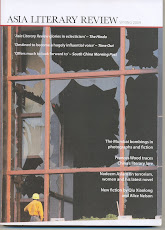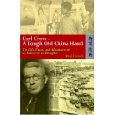
A couple more posts prompted by my recent trip to Australia.
Everytime I visit Oz a quick trip round the bookshops of Melbourne and Sydney is required. Australia seems to have a thriving publishing industry and I often come across interesting books down under that I've never heard of before. This time was no exception.
For a number of reasons - not least their horrendous losses in total population terms - the Australians have retained a stronger fascination and collective memory of the First World War than Europeans I think. This year has seen a lot of new WW1 books what with it being the 90th anniversary of the Armistice in 1918. Among them is one I had not heard of and haven't seen reviewed anywhere but is well worth a read - John Hamilton's
Gallipoli Sniper: The Life of Billy Sing (Macmillan Australia).
The book interested me for a number of reasons - I read a lot on the Gallipoli/Dardanelles campaign as a cousin on my mother's side died fighting with the British infantry there while my Great Grandfather was in the Royal Navy during the evacuation of British and ANZAC troops away from the disaster and nearly lost a foot to a Turkish shell (which I have somewhere - it was his most treasured souveneir and certainly dragged out more often at family parties than his medals!).
But the book is also of interest as Billy Sing, Australia's most notorious sniper at Gallipoli (200 credited kills), was half-Chinese. His father was originally from Shanghai and emigrated to Australia as part of the nineteenth century gold rush ending up a drover in remote Clermont, 800 or so miles north of Brisbane in Queensland, and marrying an English woman in what appears to have a been a socially disliked but internally very happy marriage. Hamilton's book has some interesting asides on the problematic relationship of the Chinese in Australia, racism, the contempt many 'whites' held for inter-racial marriages, the sometimes violent and tragic anti-Chinese reaction of some, the adverse effects on the Chinese of the introduction of the White Australia Policy etc. Technically Billy should not have ended up a Light Horseman or in Gallipoli (he later also fought in the trenches of France) at all - the rules stated that recruits should be of 'majority European heritage' and many other Chinese-Australians who tried to enlist were rejected purely because of their heritage.

Billy became notorious turning his bushman skills to sniping. He returned to Australia sick and wounded but notorious - his horrific expriences at Gallipoli and in France as well as his notoriety did not help his post-war adjustment and the book ends on a rather sorry but poignant note.
Hamilton had to work from scant sources - Billy didn't exactly leave copious notes on his experiences - but manages to pull his life together into a coherent narrative. Billy Sing's was hardly the typical Chinese-Australian experience - his mixed ancestry allowed him more fluidity in turn of the century Queensland and beyond than most, he never evinced much interest in the Chinese part of his background and was, if anything, the archetype of the Ozzie cobber valuing mateship higher than anything else in the outback while at the time he achieved a level of fame across Australia few if any other Chinese in the country did. But his extraordinary story is as much a part of the experience of those Chinese that went to Australia in the nineteenth century and their offspring as any other.































